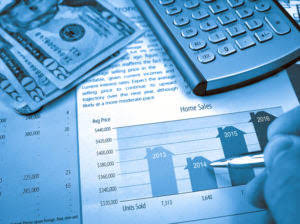
Additionally, consider the example of a business owner whose desk has a useful life of seven years. How much the desk is worth at the end of seven years (its fair market value as determined by agreement or appraisal) is its residual value, also known as salvage value. This information is helpful to management to know how much cash flow it may receive if it were to sell the desk at the end of its useful life. Be mindful that for assets with a low salvage value and high cost to dispose of, how to get salvage value it is entirely possible to have a negative residual value.
How to calculate and record depreciation with salvage value
Residual value also figures into a company’s calculation of depreciation or amortization. Suppose a company acquires a new software program to https://www.facebook.com/BooksTimeInc/ track sales orders internally. This software has an initial value of $10,000 and a useful life of five years.
How Small Business Accountants Use Salvage Value

For example, if the machinery of a company has a life of 5 years and at the end of 5 years, its value is only $5000, then $5000 is the salvage value. First, companies can take a percentage of the original cost as the salvage value. Third, companies can use historical data and comparables to determine a value. Both declining balance and DDB require a company to set an initial salvage value to determine the depreciable amount.
- Besides his extensive derivative trading expertise, Adam is an expert in economics and behavioral finance.
- The residual value of a car is the estimated value of the car at the end of the lease.
- To determine the residual value of an asset, you must consider the estimated amount that the asset’s owner would earn by selling the asset (minus any costs that might be incurred during the disposal).
- Auditors should examine salvage value levels as part of their year-end audit procedures relating to fixed assets, to see if they are reasonable.
- In addition, the cost to dispose of the asset may become more expensive over time due to government regulation or inflation.
How do you determine the salvage value of a car?

However, be cautious and have a detailed inspection done to assess hidden damages. Also, consider future insurance premiums and potential resale challenges down the line,” he says. Perhaps the most common calculation of an asset’s salvage value is to assume there will be no salvage value.

What are the risks of buying a salvage title car?
- Therefore, the salvage value is simply the financial proceeds a company may expect to receive for an asset when it’s disposed of, though it may not factor in selling or disposal costs.
- This method spreads out the depreciation equally over each accounting period.
- Salvage value is also called scrap value and gives us the annual depreciation expense of a specific asset.
- But if you think the insurance company’s offer is too low, you’ll need to provide evidence as to why the vehicle is worth more than what the insurance company is offering.
- This $1,000 is expensed to a contra account called accumulated depreciation until $500 is left on the books as the value of the equipment.
- It can be calculated if we can determine the depreciation rate and the useful life.
The residual value of a car is the estimated value of the car at the end of the lease. The residual value of a car is calculated by the bank or financial institution; it is typically calculated as a percentage of the manufacturer’s suggested retail price (MSRP). The difficulty in calculating residual value lies in the fact that both the salvage value and the cost to dispose of the asset may not truly be known until disposition. Residual value formulas differ across industries, but its general meaning—what remains—is constant. For investments, the residual value is calculated as the difference between profits and the cost of capital.
These numbers can be arrived at in several ways, but getting them wrong could be costly. Also, a straight-line basis assumes that an asset’s value declines at a steady and unchanging rate. This may not be true for all assets, in which case a different method should be used. Companies use depreciation for physical assets, and amortization for intangible assets such as patents and software. In finance, a straight-line basis is a method for calculating depreciation and amortization. It is calculated by subtracting an asset’s salvage value from its current value and dividing the result by the number of years until it reaches its salvage value.
Everything You Need To Master Financial Modeling
Salvage value is important in accounting as it displays the value of the asset on the organization’s books once it completely expenses the depreciation. It exhibits the value the company expects from selling the asset at the end of its useful life. With a large number of manufacturing businesses relying on their machinery for https://www.bookstime.com/ sustained productivity, it is imperative to keep assessing the equipment they own.
Salvage Value – A Complete Guide for Businesses

It’s just an estimate since your business may be able to continue using an asset past its useful life without incident. Once you have viewed this piece of content, to ensure you can access the content most relevant to you, please confirm your territory. By the end of the PP&E’s useful life, the ending balance should be equal to our $200k assumption – which our PP&E schedule below confirms. Hence, a car with even a couple of miles driven on it tends to lose a significant percentage of its initial value the moment it becomes a “used” car. Under straight-line depreciation, the asset’s value is reduced in equal increments per year until reaching a residual value of zero by the end of its useful life. Learn online from Wall Street Prep — the training firm that prepares new hires at the world’s top financial institutions.
